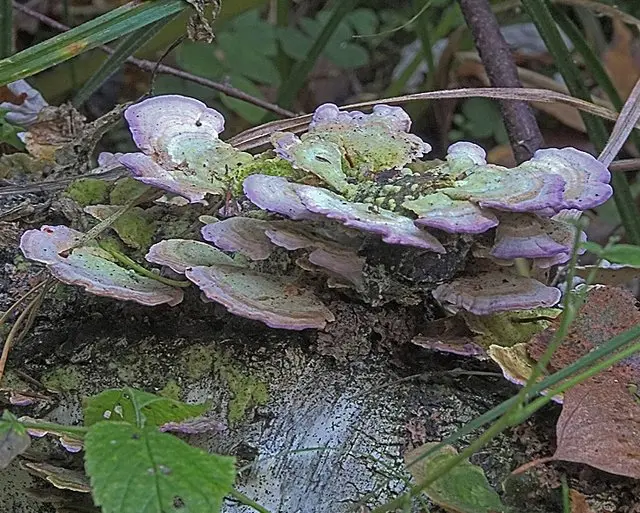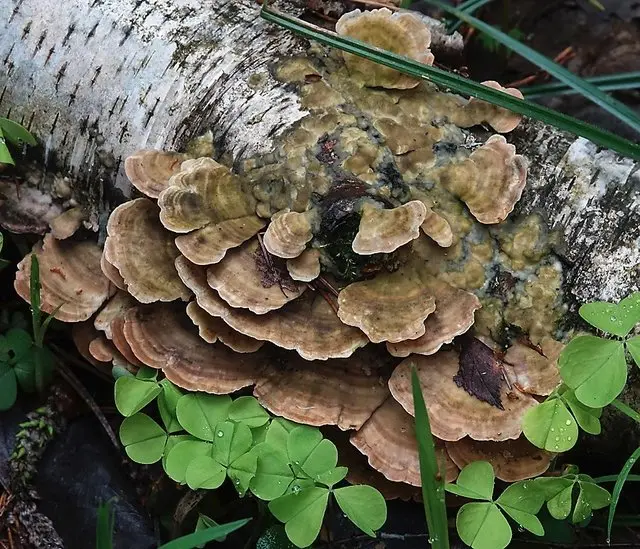Trihaptum biforme (Trichaptum biforme)
- Division: Basidiomycota (Basidiomycetes)
- Subdivision: Agaricomycotina (Agaricomycetes)
- Class: Agaricomycetes (Agaricomycetes)
- Subclass: Incertae sedis (of uncertain position)
- Order: Polyporales (Polypore)
- Family: Polyporaceae (Polyporaceae)
- Genus: Trichaptum (Trichaptum)
- Type: Trichaptum biforme (Trichaptum biforme)
:
- Bjerkander biformis
- Coriolus biformus
- Micropore biform
- Polystictus biformis
- Two-way trams
- Trichaptum parchment

The caps of Trichaptum double are up to 6 cm in diameter and up to 3 mm in thickness. They are located in tiled groups. Their shape is more or less semicircular, irregularly fan-shaped or kidney-shaped; convex-flattened; the surface is felt, pubescent, later almost smooth, silky; light gray, brownish, ocher or greenish in color with concentric striping, sometimes with a pale purple outer edge. In dry weather, the hats can fade to almost white.

The hymenophore is colored in purple-violet tones, brighter closer to the edge, quickly fading to brown or yellowish-brown with age; when damaged, the color does not change. The pores are initially angular, 3-5 per 1 mm, with age they become sinuously dissected, open, irpex-shaped.
The leg is missing.
The fabric is whitish, hard, leathery.
Spore powder is white.
microscopic features
Spores 6-8 x 2-2.5 µ, smooth, cylindrical or with slightly rounded ends, non-amyloid. The hyphal system is dimitic.
Trihaptum double grows like a saprophyte on fallen trees and stumps of hardwoods, being a very active wood destroyer (causes white rot). The period of active growth is from late spring to autumn. Widespread species.
Spruce Trihaptum (Trichaptum abietinum) is distinguished by smaller fruiting bodies that grow in numerous groups or rows on fallen coniferous trees. In addition, his hats are more uniform grayish and more pubescent, and the purple tones of the hymenophore last longer.
A very similar brown-violet trihaptum (Trichaptum fuscoviolaceum) grows on conifers and is distinguished by a hymenophore in the form of radially arranged teeth and blades, turning into serrated plates closer to the edge.
In a grayish-whitish tones and less pubescent larch Trichaptum (Trichaptum laricinum), which grows on a large fallen coniferous tree, the hymenophore has the appearance of wide plates.









